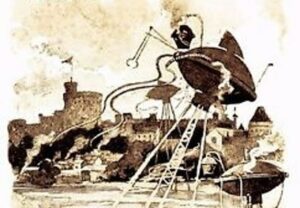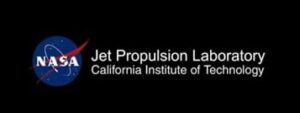This segment of Hearing International could almost be called Hearing Interplanetary as it relates to the sounds of Mars. Recently, the multinational project called InSight Lander found its way to Mars to study the make up of the planet.
Early Experiences with Mars in America
 Some of the earliest sounds of Mars heard by an American audience was on the a 1938 radio broadcast. Mass panic erupted amongst millions of radio listeners October 30 of that year as news bulletins “interrupted regular scheduled programming” stating Martians have landed on Earth. Narrated by Orson Wells, the news seemed bleak as space ships were landing and taking over the
Some of the earliest sounds of Mars heard by an American audience was on the a 1938 radio broadcast. Mass panic erupted amongst millions of radio listeners October 30 of that year as news bulletins “interrupted regular scheduled programming” stating Martians have landed on Earth. Narrated by Orson Wells, the news seemed bleak as space ships were landing and taking over the world. Click here to hear what this sounded like in 1938. This was in fact the famous radio broadcast put on by The Mercury Theatre on the Air (radio drama) and was part of their Halloween episode th
world. Click here to hear what this sounded like in 1938. This was in fact the famous radio broadcast put on by The Mercury Theatre on the Air (radio drama) and was part of their Halloween episode th at year. Seeing the wide spread reaction and panic, the radio station (CBS) had to retract and admit it was only theatre and no such invasion existed. Earth, of course, was safe. While the world had been fascinated by Mars for centuries, for one night in America this performance brought home the idea to millions in a 1938 radio audience that there might really be life on another planet, spurring speculation, research and fiction relative to the red planet.
at year. Seeing the wide spread reaction and panic, the radio station (CBS) had to retract and admit it was only theatre and no such invasion existed. Earth, of course, was safe. While the world had been fascinated by Mars for centuries, for one night in America this performance brought home the idea to millions in a 1938 radio audience that there might really be life on another planet, spurring speculation, research and fiction relative to the red planet.
At one time, astronomers even believed the surface of Mars was crisscrossed by canal systems. This in turn gave rise to speculation that Mars was very much like Earth, capable of supporting life and home to a native civilization. Over the years comic books, films and folklore such as Buck Rodgers, Flash Gordon capitalized on the this speculation that there Martians ready to invade the Earth and set up stories about were excursions to Mars and other planets spurring these War of the Worlds reactions. As human satellites and rovers began to conduct flybys and surveys of the planet, this vision of Mars quickly dissolved, replaced by one in which the Red Planet was a cold, desiccated and lifeless world.
Fact Not Fiction
Over the past 1/2 century, there have been many real visits to Mars and the latest exploration, the multinational InSight project offers some interesting audio, not just for audiologists, but for everyone. The simple idea that there is wind on another planet, so close to ours is fascinating and that we can retrieve these sounds from about 34 million miles away (at its closest point) is just a miracle of modern technology. InSight is the first mission to explore Mars’ deep interior. It landed on Monday, Nov. 26, 2018, in the Elysium Planitia region of Mars. The Elysium Planitia region is the second largest volcanic region on the planet 1056 by 1450 miles square in size and located on an uplift dome. This area offers NASA and their world partner scientists 3 large volcanoes for study, Hecates Tholus, Albor Tholus, and Elysium Mons. While these volcanoes are smaller than those in the area of Olympus Mons (The tallest volcano in the solar system) and the others found in the Tharsis  region they are still quite large. Elysium Mons is the largest volcano in this region, measuring 435 miles across and rises some 8 miles above the surrounding plains. InSight’s landing team deliberately chose a landing region in Elysium Planitia to be as free of rocks as possible and the landing spot turned out even better than they hoped. The InSight spacecraft sits in what appears to be a nearly rock-free “hollow” — a depression created by a meteor impact that later filled with sand, called the Jezero Crater. That should make it easier for one of InSight’s instruments, the heat-flow probe, to bore down to its goal of 16 feet below the surface.
region they are still quite large. Elysium Mons is the largest volcano in this region, measuring 435 miles across and rises some 8 miles above the surrounding plains. InSight’s landing team deliberately chose a landing region in Elysium Planitia to be as free of rocks as possible and the landing spot turned out even better than they hoped. The InSight spacecraft sits in what appears to be a nearly rock-free “hollow” — a depression created by a meteor impact that later filled with sand, called the Jezero Crater. That should make it easier for one of InSight’s instruments, the heat-flow probe, to bore down to its goal of 16 feet below the surface.
InSight’s job is to investigate the processes that shaped the rocky planets of the inner solar system more than four billion years ago. The Jezero Crater is the ideal landing area for these investigations as it is in close proximity to the smaller volcanos. According to a NASA spoksman, “The landing site in Jezero Crater offers geologically rich terrain, with landforms reaching as far back as 3.6 billion years old, that could potentially answer important questions in planetary evolution and astrobiology.” Thomas Zurbuchen, associate  administrator for NASA’s Science Mission Directorate, said in a recent space agency news release. “Getting samples from this unique area will revolutionize how we think about Mars and its ability to harbor life.”
administrator for NASA’s Science Mission Directorate, said in a recent space agency news release. “Getting samples from this unique area will revolutionize how we think about Mars and its ability to harbor life.”
Accoding to Mosher, (2018), “Mars has air about 1% as thick as Earth’s. That’s so feeble, you might not hear someone talking to you from a few feet away. Nevertheless, wind and tornado-like dust devils do blow across the Martian surface, and recording the sounds of these phenomena is essential to the success of NASA’s newest mission at the red planet.” NASA’s goals for the InSight Lander are, among other things, to measure Martian seismic rumbles called “Mars quakes” but the seismometer tool is so sensitive that winds can affect its readings. NASA researchers indicate that this can happen if wind blows against the instrument itself or if it causes the lander’s solar panels to move ever-so-slightly.
The Sounds of Mars
Of course, Murphy’s Law has prevailed even on Mars, and this happened December 1….. The spacecraft’s seismometer and air pressure sensor picked up vibrations from 10-15 mph winds as they blew across Mars’ Jezero Crater. As 21st Century Audiologists, we should know how a Martian wind sounds……The seismometer readings are within the range of human hearing, but are nearly all low frequency and are difficult to hear on  laptop speakers and/or mobile devices. The NASA video provides the original audio and a version pitched up by two octaves to make them audible on computer devices. Playback is suggested on a sound system with a subwoofer or through headphones. Readings from the air pressure sensor have also been sped up by a factor of 100 times to make them audible. Expand your horizons to the Jezero Crater and listen to Martian wind blow. Click on the Jet Propulsion Laboratory pic for the video.
laptop speakers and/or mobile devices. The NASA video provides the original audio and a version pitched up by two octaves to make them audible on computer devices. Playback is suggested on a sound system with a subwoofer or through headphones. Readings from the air pressure sensor have also been sped up by a factor of 100 times to make them audible. Expand your horizons to the Jezero Crater and listen to Martian wind blow. Click on the Jet Propulsion Laboratory pic for the video.
References:
Mosher, D., (2018).NASA can hear the ‘haunting’ sound of dust devils tearing across Mars with its new $830 million lander. Business Insider. Retrieved December 7, 2018.
NASA /JPL- Caltech (2018). The sounds of Mars: NASA’s InSight Senses Martian Wind, Imperial College/Cornell, Retrieved December 11, 2018.
NASA/JPL -Caltech (2018). InSights First Selfie. Retrieved December 12, 2018.
NASA (2018). InSider Briefing Materials. Retrieved December 11, 2018.
NASA (2013). Elysium MOLA. Retrieved December 11, 2018.
NASA (1996). Comparison of Earth to Mars. Mars Global Surveyor Project, Retrieved December 11, 2018.
Welles, Orson (1938). The War of The Worlds, Mercury Theatre, CBS, Retrieved December 11, 2018.






